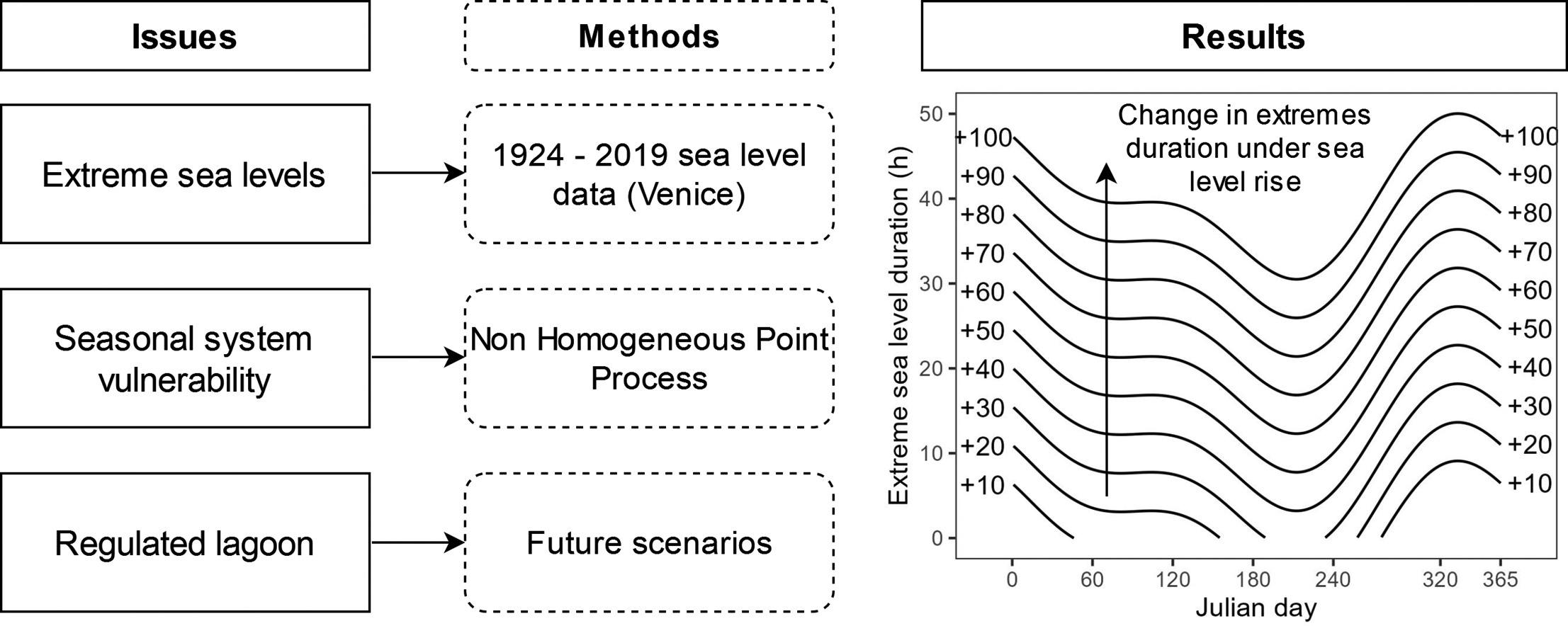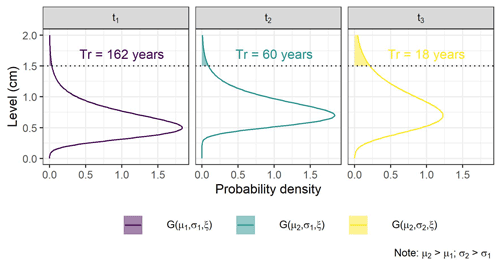Highlights
• Point process model for extreme sea levels duration and occurrence frequency
• Forecast under climate change for the Venice Lagoon and its storm surge barrier system
• Future increases in extreme sea levels duration and occurrence depend on the season.
• Storm surge barriers are likely to be operated also in summer in the future.
Abstract
Extreme sea levels (ESLs) affect coastal ecosystems worldwide. Protection and adaptation strategies rely on the characterization of the extreme's occurrence probability in the future. However, knowledge on the occurrence rate and duration of ESLs is also needed to properly characterize the associated future risk. In this paper, we focus on the Venice lagoon, where a system of storm surge barriers can disconnect the lagoon from the sea to mitigate ESLs. Using long-term (96 years) sea level records, we model occurrence rate and duration of ESLs while accounting explicitly for seasonality and mean sea level rise. While historically ESLs occurred in the winter season, we project a significant increase (up to 10-fold with a mean sea level increase of +100 cm) of the occurrence rate also in the summer season, when disconnections from the sea can have profound impacts on the lagoon's ecosystem. We also predict an increase in ESLs durations up to 200 h, leading to longer disconnections of the lagoon from the sea in the future. Therefore, several adaptation strategies will be needed to limit the adverse effects of storm surge barriers on the lagoon ecosystem.



